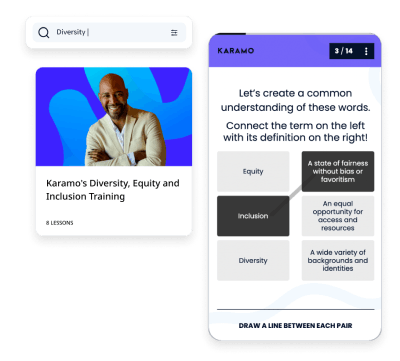

In today's dynamic workplaces, the interplay between personal values and professional responsibilities often gives rise to cognitive dissonance. As you recognize instances of cognitive dissonance, you can address ethical dilemmas, enhance employee well-being, and align company practices with stated values.
This knowledge also helps your team navigate these challenges more effectively. It promotes healthier workplace cultures and ultimately bolsters overall productivity and satisfaction.
Leon Festinger’s Cognitive Dissonance Theory proposes that individuals experience psychological discomfort when confronted with conflicting beliefs, attitudes, or behaviors. This motivates people to seek harmony and consistency within their minds, prompting them to either change their beliefs, modify their actions, or rationalize their choices.

The theory suggests that resolving cognitive dissonance is crucial for maintaining mental equilibrium. People are driven to reduce this dissonance by aligning their thoughts, attitudes, and behaviors in ways that minimize internal conflict.

Signs of cognitive dissonance often include observable behaviors and psychological responses. Recognizing these signs can help identify instances of cognitive dissonance and offer opportunities for resolution through introspection, adjustment of beliefs, or behavioral changes. Examples of these signs include the following:
Increased stress, anxiety, or inner turmoil Avoidance behaviors, such as evading conversations or situations that challenge conflicting beliefsRationalization or justification to explain or downplay inconsistencies between attitudes and actions
Selective exposure to information that supports existing beliefs while avoiding contradictory evidence
Attempting to find common ground or compromise to reduce the discrepancy between beliefs Defensive reactions when confronted with opposing viewpoints Difficulty in making decisions due to conflicting thoughtsCognitive dissonance has a significant impact on the workplace. It influences employees' attitudes, behaviors, and overall dynamics. It can also lead to reduced job satisfaction, lower morale, and increased stress.
 dissonance affect the workplace?" width="400" height="268" />
dissonance affect the workplace?" width="400" height="268" />
Your employees may struggle to reconcile their values with company policies or unethical practices. This potentially results in decreased engagement and motivation. Also, cognitive dissonance can hinder effective decision-making as rationalizing their professional choices to align with their existing beliefs makes it more difficult.
Understanding these effects of cognitive dissonance psychology can help you take proactive measures to minimize its negative impact. Addressing it also fosters a more transparent and ethical work environment and improves employee well-being.
Your employee's strong desire for professional advancement can clash with the reality of being confined to a role that restricts chances for skill development and career progression. Cognitive dissonance intensifies as they recognize the mismatch between their aspirations and their current limitations.

To address this, you could establish a career development program that includes regular skill-building workshops, mentorship opportunities, and cross-functional projects. This initiative would align your employee's growth objectives with avenues for skill development. This minimizes the dissonance and encourages a more engaged and fulfilled workforce.
You can fulfill your employees’ desire for personal and professional growth with SC Training (formerly EdApp), an award-winning microlearning platform. SC Training (formerly EdApp) offers bite-sized courses on essential skills such as communication, leadership, and teamwork.

You can check these out and over 1,000 courses on SC Training (formerly EdApp)’s editable course library. All you have to do is create an account, import your desired courses, and seamlessly deliver them to your team members!

You can even edit the courses to fit your organization’s specific training and branding needs. Just use SC Training (formerly EdApp)’s intuitive drag-and-drop creator tool to customize them. You can also get help from SC Training (formerly EdApp)’s expert instructional designers by availing of the add-on course creation services.

Sign up to SC Training (formerly EdApp) to guide your team in reaching their personal and professional goals.